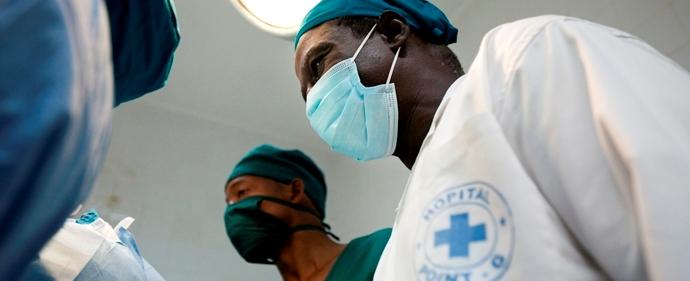Where We Work
See our interactive map


This post originally appeared on the CapacityPlus blog.
With the post-Millennium Development Goals aim of universal health coverage, major external donors will find themselves increasingly constrained in meeting the needs of developing countries. They are seeking ways to generate greater health value from the limited funds available.
The Center for Global Development (CGD) has been looking into this question, and will be issuing an important report on the subject of getting health value for money.
No health care is delivered without health workers. As one of the six building blocks for health systems strengthening, the health workforce is best addressed systematically rather than with silver bullets. Any effort to maximize health impact is critically dependent on an adequately trained, competent, productive, appropriately distributed, retained, and well-managed health workforce. It must be anchored in the composition and performance of the health workforce, one responsive to national needs. It is this aspect that has been largely under-financed by external donors in nearly all cases.
Clearly, within their institutional mandates, the Global Fund, GAVI Alliance, World Bank, and other multilateral development banks can provide funding for health worker-related activities. In the past, such funding has been principally for health worker remuneration, with limited assessment of broader health workforce strategy, policies, and possible program investments.
The question is: Can these donors do better by placing higher priority and financial resources on human resources for health as an element of disease-specific responses and health systems strengthening?
We think they can, and CapacityPlus has tools to address this “value for money” approach. These include:
Further, the Global Fund and others should focus more on assisting countries to create more cost-effective health care teams. Most countries currently use a physician- and nurse-centric model that is expensive and hinders access to care in rural areas. Teams using auxiliary nurses, community health workers, and other health workers can deliver high-quality care at the community level. Additionally, we agree with heightened attention to supply chain management, but would encourage more analysis and health workforce recommendations on that subject. Most staff responsible for the supply chain are clinical staff with minimal supply chain training. People that Deliver and other initiatives are working to professionalize supply chain workers, reduce stockouts, and enable clinical workers to focus on their patients.
We provided the CGD with a number of detailed comments on the draft report. What do you think of the draft? The Center for Global Development welcomes comments through July 12, via e-mail or on its website.
Get the latest updates from the blog and eNews




